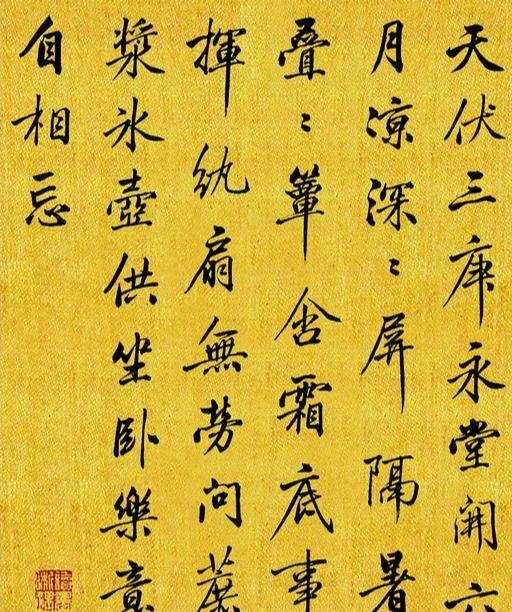In the world of calligraphy, there has always been a popular saying - "first italics and then line", first practice calligraphy, and then practice calligraphy, calligraphy is the foundation, lay a good foundation in order to practice calligraphy.
In fact, for the saying "first italics and then act", it should be understood as "first static and then moving". Among the five types of Chinese characters, seal, li, and kai belong to the static script, while xing and grass belong to the dynamic book style. At least there must be a foundation of a certain static book body before you can write a dynamic book body.

Liang Shizheng Calligraphy Collection
Because the practicality of the seal and the subordinate is not strong, the letter has become the first choice.
However, we must understand a matter of principle, xingshu is not a continuous writing of calligraphy, and there is no fixed form of expression in the xingshu itself, otherwise it would not be called "xingcao" for the cursive writing, and the xingshu for the partial cursive book is called "xingkai".
After mastering the script, we have laid a static foundation, and then we practice the dynamic line book, and the practice will be handy. However, when practicing calligraphy, it is crucial that we choose which kind of writing work to practice, and even determines our subsequent writing style and direction.
Speaking of this, many people said that of course, they had to choose the best books to practice, such as Wang Xizhi's "Orchid Pavilion Preface", Yan Zhenqing's "Sacrifice Nephew Manuscript", "Leek Flower Post", etc., which are among the best books in the world.
It is true that the study of calligraphy should "take the law from it", but this is for scholars who have a certain foundation in calligraphy, as beginners in calligraphy, before they have not been able to write well, practicing these world's best calligraphy works, just like young children who have just learned to walk to learn to race and hurdle, often the more they practice, the more they can't find the north.
The practice of writing is to focus on thick accumulation and thin hair, step by step, first practice some simple, easy-to-distinguish works in the early stage, and slowly and then go deeper.
Here is a calligraphy work for everyone - Liang Shizheng, a calligraphy wizard during the Qing Dynasty, who was Tanhualang during the Yongzheng Period, the teacher of the Qianlong Emperor, and the famous "Sanxitang Fa Ti" was compiled by him, and his calligraphy was exquisite, and even the later Qi Gong teachers learned from him.
Liang Shizheng first learned Liu Gongquan in calligraphy, followed by Zhao Mengfu and Wen Zhengming, and later yan Zhenqing and Li Yong. Behind Wang Xizhi's "Shi Xue Kuai Qing Ti" there is a very wonderful trek, which is Liang Shizheng's book trek.
Liang Shizheng can be said to show the beauty of Qing Dynasty calligraphy to the fullest, and it is difficult for future generations to surpass it.
In all the books, Liang Shizheng is best at writing, his writing bones are beautiful, the breath is coherent, elegant, the structure is staggered, dense and clear, in the pavilion body of the calligraphy environment, Liang Shizheng can write the line out of personal characteristics, penmanship, is rare!
Liang Shizheng's writing is naturally inferior to Wang Xizhi's, but you may not be able to recognize all the words in Wang Xizheng's book, but you will certainly be able to recognize all of Liang Shizheng's words.
Liang Shizheng's calligraphy is clear and clear, and the strokes are skillful, but it is the most suitable work for beginners in calligraphy.
Today, through our efforts, we have compiled the works left by Liang Shizheng into a book and collected them into a calligraphy collection of "Liang Shizheng Calligraphy Collection" for calligraphy enthusiasts.
Liang Shizheng calligraphy collection brush calligraphy poster 16 folio ¥30 purchase
——Edited by Qian Yuan